As the rain drizzles down my window pane and the clouds are stormy grey, I dream of a holiday not so far away, where the sun is bright and cheerful with its peacocking golden rays and the skies are as blue as the mermaid kingdom that lies beyond the sea, where the mermaids swim happily ever after. In this alluring Spanish archipelago the fantastical possibilities are endless as you swim among the dolphins in the wild and dive off a glossy magazine spread esque yacht into the tranquil open waters, where teal green and navy merge together in one magical hodge podge of mermaids and mermen. It’s a hot subtropical climate here in The Canary Islands, so it should come as no surprise that 12 million tourists make their way over to the islands with a giant inflatable swan, every year, casting their eager eye over the golden sand beaches, hot underneath our toes, with the water splashing at our feet ever so slightly. We go slightly too pink, a shade above ‘lobster’ in the sun, as our parasols make merry with the cascading waves, white foam spray on the tip of our toes, it’s almost cooling.
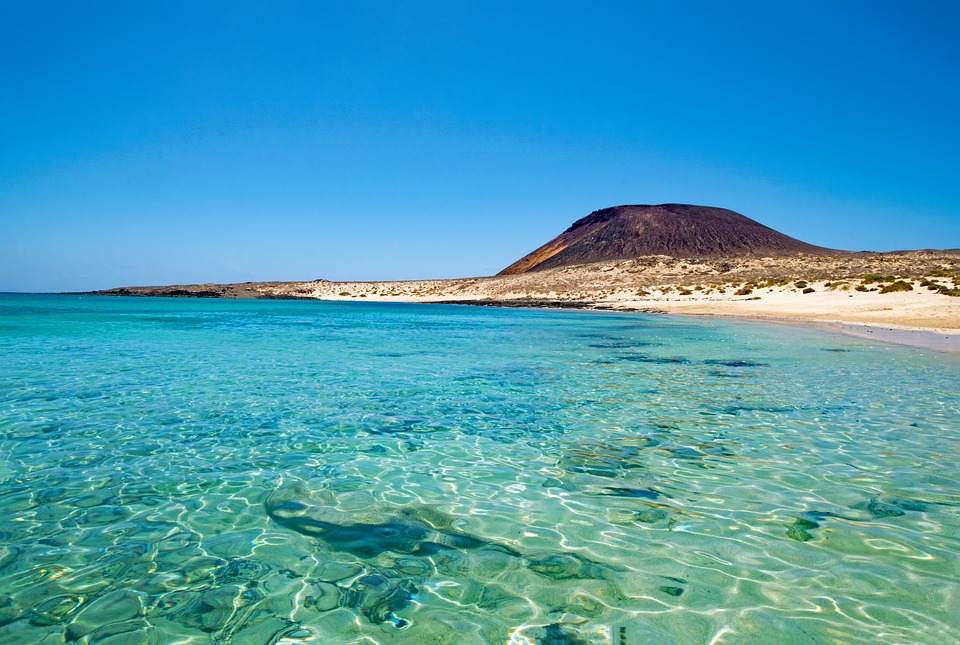
With 2,800 hours of sunshine each year, we can acknowledge that The Canary Islands is a beautiful series of magical vistas that will give us a much needed dose of Vitamin D, something which we severely lack in the UK. And yet there is more to The Canary Islands than just glorious white sand beaches, where the mermaids frolic and the unicorns splash through open waters. It’s a land of hope and glory too, where couples come to cement their vows in the midst of nature, where explorers come to hike through Mount Teide, the highest point in Spain and where tourists ravage copious amounts of queso de flor de Guia ( a sheeps milk cheese curdled with thistle flowers) during the Fiesta del Queso, which is held every spring in the town of Santa Maria de Guia on Gran Canaria. Tourists and locals alike will revel in the beauty that is The Canary Islands, watching in awe as the landscape changes from a postcard image of golden sand beaches teeming with colourful tourists, to the quiet solitude and tranquility of ‘La Palma’ where Caldera de Taburiente National Park is home to diverse and abundant plant life like laurisilva, making La Palma a ‘biosphere reserve’.
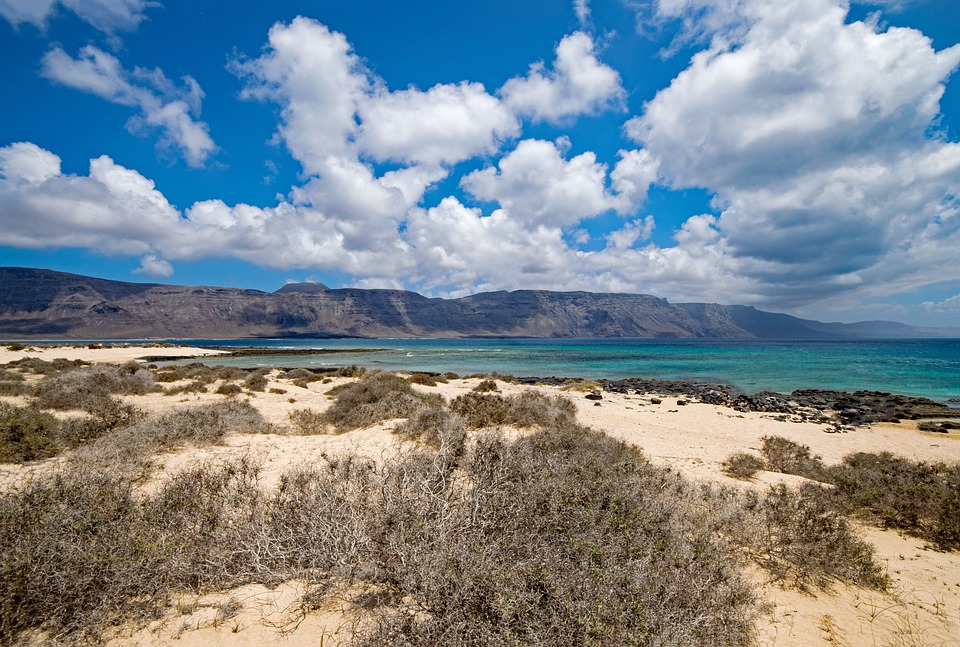
But why should The Canary Islands be part of your holiday bucket list in 2019 I hear you ask? Picture the scene, tempestuous stormy clouds turn your days and nights into purgatorial rebellion, where the sun hides behind the clouds in search of summer, and the rain dances with the wind in an unbidden tango. You are tied to your desk day and night, with the stormy weather outside dampening your mood and are exhausted beyond compare, tired of the same mundane routine that drives away your creativity and zest for life. Sound familiar? It goes without saying that living in the modern world can often de-sensitize us to the notion of ‘rest’, ‘self-care’ and ‘me-time’ where we continue working into the early hours of the morning, propelled by the notion of success. But travelling, no matter how near or far, is like balm to the soul, as we drive through a new climate and temporarily accustom ourselves to a new way of life. Which is where the ultimate Canary Islands guide comes in; from climbing Spain’s tallest mountain, to sunning ourselves on pristine postcard beaches, here is why The Canary Islands should be on your bucket list.
The Canary Islands Is A Geographers Wet Dream: Volcanoes VS Forest
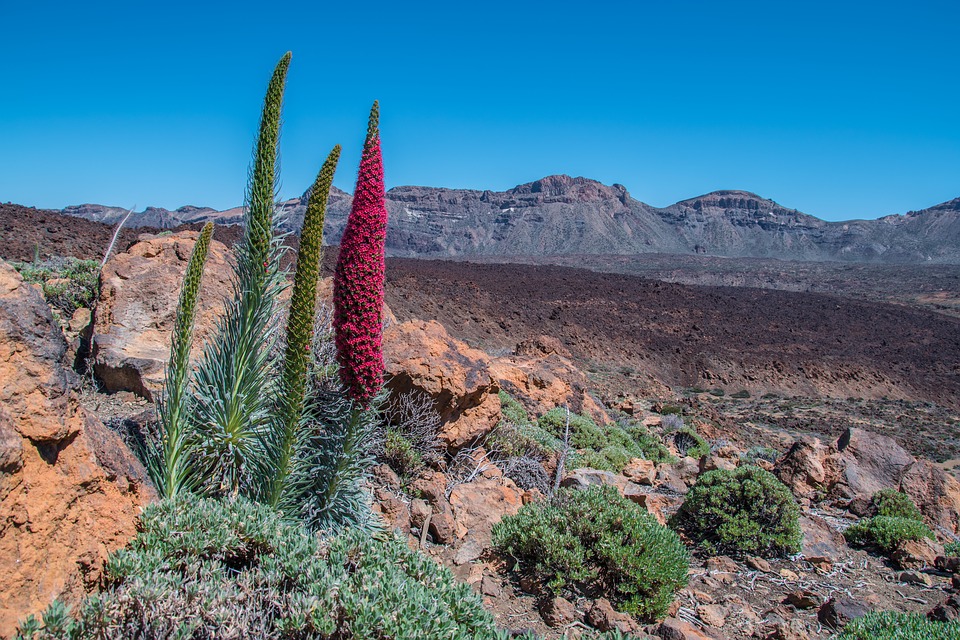
Described as being a bridge between three continents- Africa, America and Europe- The Canary Islands form the Macaronesia ecoregion with the Azores, Cape Verde, Madeira, and the Savage Isles, The Canary Islands being the largest and most populated archipelago of the Macaronesia region. There are lush extensive tracts of sub-tropical laurisilva forest lying to the west of the archipelago, accentuated by the moist ‘Canary Current’ (most evident in the micro-climates of El Hierro, La Palma and La Gomera), while nearest to the African mainland are arid, semi-desert landscapes, a hodgepodge of terrocotta and beige. When travelling East towards the African Coast, the well vegetated terrains of La Palma give way to drier landscapes like Fuerteventura and Lanzarote, which are semi desert and desert micro-climates. But it is the ‘Gran Canaria’ that offers the most diverse natural landscapes, ranging from Maspalomas with its the Natural Reserve of the Dunes of Maspalomas, which constitutes an important landmark of Gran Canaria to the Roque_Nublo formed by a volcanic eruption around 4.5 million years ago in Nublo Rural Park. It’s little wonder therefore that The Canary Islands has been described as a ‘continent in miniature’ with its changing micro-climates and appeal to geologists, tourists interested in nature and meteorologists.
While de-forestation has seen the loss of well populated laurisilva forests throughout the world, The Canary Islands, like Madeira is famed for its sub-tropical climate that allows Laurisilva forests to grow abundantly throughout the region. Characterized by broadleaf tree species with evergreen, glossy and elongated leaves, known as “laurophyll” or “lauroid”, Laurel forests are found in areas with high humidity and relatively stable, mild temperatures such as the aforementioned La Palma, popular with ‘bird watchers’ and ‘tree lovers’. A contrast to the often chaotic nature of the many beaches in Canaria, La Palma is a reserve with solitude in mind, originally formed as a seamount through submarine volcanic activity. Tied with Tenerife as being the most volcanically active of the Canary Islands, you can imagine the volcano collapsing with a landslide all those many years ago, where black sooty ash mixes with roaring orangish red flames, in a heated flight of passion, the most recent of which was in 1971 in Volcán Teneguía which occurred on Cumbre Vieja’s volcanic ridge.
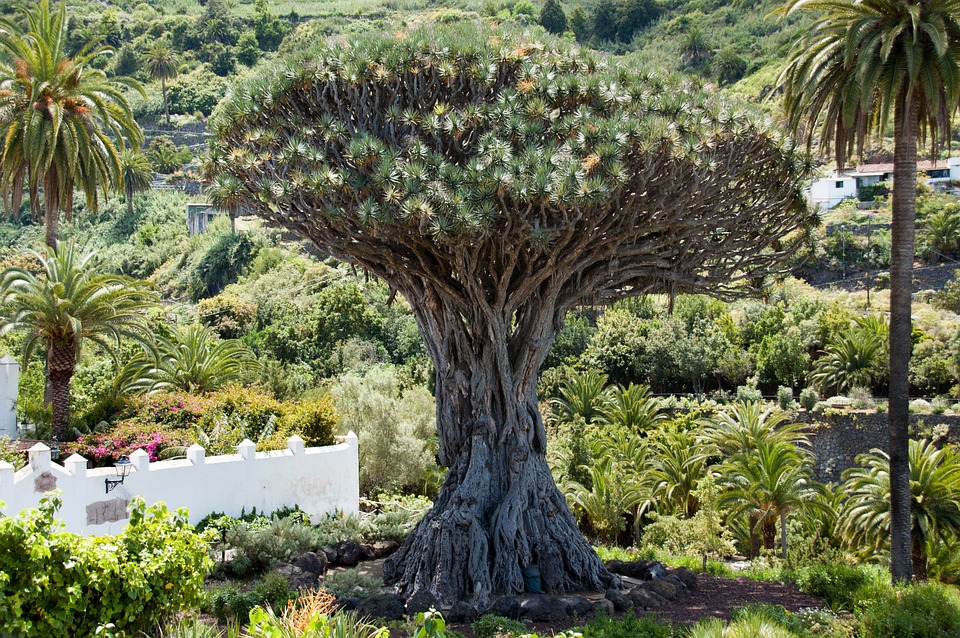
Tenerife is also a geologists fantasy come to life being the largest and most populated island of the seven Canary Islands with 898,680 inhabitants.Formed three million years ago by the fusion of three islands made up of the mountain ranges of Anaga, Teno and Valle de San Lorenzo, Tenerife is a rugged and volcanic island sculpted by successive eruptions throughout its history (1704, 1706, 1798 and 1909). While none of the volcanic eruptions had any casualities thus far, its fascinating to witness how the city and port of Garachico could rebuild itself after being buried by the lava in the eruption of 1706, which took place at Trevejo.
The Canary Islands Offers A Welcome Respite From Real Life With Magical White Sand Beaches

Of course while there is more to The Canary Island than just beaches, we can’t not talk about the islands without paying tribute to the beauty that is its coastal landscape. Boasting over 500 stunning beaches of all types, lengths and colors, some of the most renowned Spanish island beaches include Playa del Inglés Beach in Gran Canaria, the iconic Los Patos Beach in Tenerife and Teresitas in Tenerife, cementing its position as a ‘beachgoers paradise’. With sweeping dramatic dunes and volcanic cliffs juxtaposed with white and black sand beaches, The Canary Islands has something to offer any beach goer’s needs and wants. In Teresitas, a rare white sand beach in Tenerife, you can plunge into the teal depths of the open waters, wriggling your toes in golden sand imported from Sahara and swept in a curve along the underbelly of the Anaga mountains. Located in the town of San Andrés, this golden sandy beach cove is alive with palm trees swaying in the gentle lulling breeze, an emblematic beach that is lined with ‘breakwaters’ to calm the current, a beach that is especially popular at weekends when kids are off school. Known as the’posterboy’ of the Tenerife beaches, it’s little wonder this gem is as popular as it is, with its golden stretch of sand juxtaposed with a quaint pier and a teal underwater kingdom.
For nudist beach enthusiasts the legendary Los Patos Beach in Tenerife might be more to your taste located in the spectacular La Orotava valley, with Teide in the background. You can relinquish the bonds of human clothing and bask among nature, letting the cool, fresh water wash over you in a semi-purification ritual that cleanses the soul, while a protected area of two million square metres with banana plantations stands before you, as you bask completely naked in the grasp of nature. But for those of us who would rather not go nude, the gorgeous Playa del Inglés Beach in Gran Canaria is breathtaking, described as having the ‘feel good factor’ emphasized by its mild climate and access to water sport activities like windsurfing, water-skiing and so much more. Bordered by the beaches of San Agustín in the east and Maspalomas in the west, the 2.7 kilometre long Playa del Inglés lays claim to being one of the most famous beaches in Europe, although it is so much more than just your typical beach. For a start mermaids who desire to morph into flower queens can waltz along the melodic pedestrian promenade, known as the Paseo Costa Canaria, which is lined with lush tropical flora and luxurious villas, freshly plucked out of a glossy Spanish brochure. And even if nudism is your thing too, here is a nudist area close to the Maspalomas dunes, where you can be free to feel the wind nestle your ‘bits’ in a warm gusty blanket of sand.
The Canary Islands Is A Treasure Trove Of Culinary Delights: Eat Your Heart Out
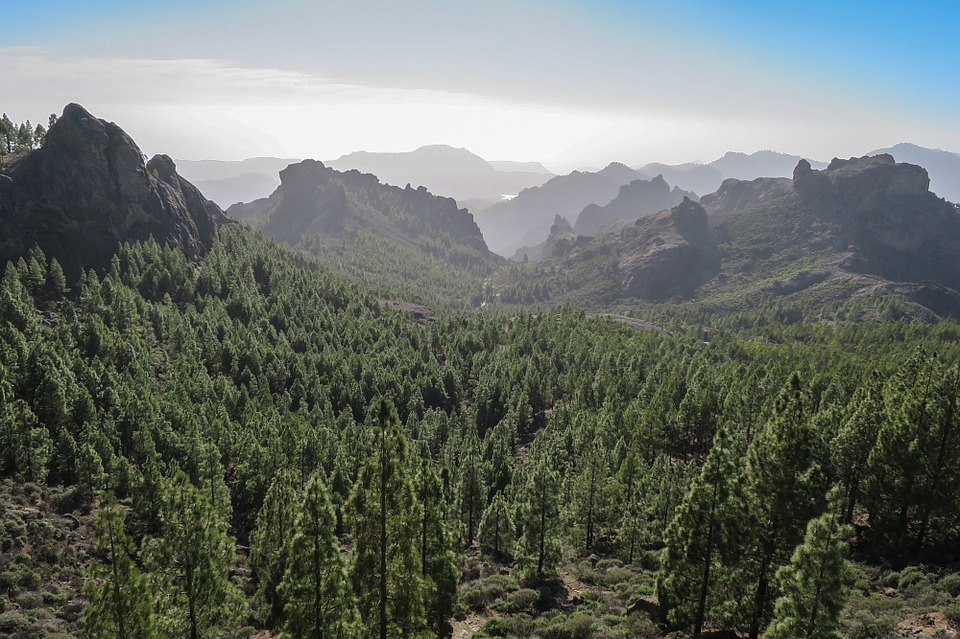
Like all archipelagos, The Canary Islands is famed for its ‘unique, innovative and local’ cuisine ranging from specialties such as Mojo Picón, a spicy sauce composed of garlic, olive oil, red or green pepper, cumin, salt and vinegar,Papas arrugadas which are un-peeled potatoes cooked with lots of salt and garnished with Mojo Picon and Sancocho canario, fish cooked whole and served with sweet potato, gofio and papas arrugadas. What I am immediately struck by when sifting through ‘traditional Canarian’ recipes, is how ‘vegetarian’ and ‘vegan friendly’ their recipes are, reflecting the simplicity and ‘vegetable based’ nature of the island’s food, whose ‘simple ingredients’ does nothing to deflect from how delicious these culinary treasures are. For a start, the Mojo Picon is a wonderful blend of spice and rustic simplicity, a welcome allude to the traditional local’s way of life and the blazing hot weather that sweeps throughout the island. Served with almost every Canarian dish, it’s little wonderful therefore that The Canary Islands were for centuries the crossroads between Europe and America, evidenced by gastronomic specialties that were influenced by the cuisines of Africa, Europe and America.
Best served with Papas Arrugadas, these humble potatoes gain a different texture and flavor, which make this dish so special, due to the volcanic climate of the islands. Unlike in the UK (with the exception of new potatoes ) papas are not peeled, instead plunged in boiling water with a lot of salt for around 20-30 minutes, to truly seal in the rustic flavour. Once the Papas Arrugadas have been boiled, locals will remove the water from the pan and add more salt over the potatoes until they dry, a technique I have seen also used in Madeira with salted cucumber, in herb salads, drizzled with olive oil. The Papas are then lovingly doused with Mojo picón for a simple but flavoursome dish. My personal favourite however has to be the divine Almogrote, a flavorsome dip typical of the small island of La Gomera and made with the leftovers of matured cheese, hot pepper and paprika, all blended together with olive oil and garlic. Strong and spicy, this dip tastes just as delicious on rustic homemade bread as it does in a simple bowl of pasta for that extra kick. Another strong contender has also got to be the mouthwatering Bienmesabe a traditional sweet made on the island of Gran Canaria, in the city of Tejeda. As Tejeda has a prolific number of almond trees, which are used as a base ingredient in Bienmesabe, the recipe also requires eggs, sugar and lemon zest, and the end result is a stunning melt in your mouth dessert. Plus it helps that Bienmesabe translates as ‘it tastes good to me’ which is always a winning tagline.
Have You Ever Been To The Canary Islands Before?
Beautiful! I don’t think I’ve been to the Canary Islands 🙂
I definitely need to look into this island more, it is gorgeous!
I have never been to or thought of the Canary Islands but now that I have seen these beautiful pictures, I want to go.
What a gorgeous place. Would love to visit some day. Thank you for the day dream!
Looks gorgeous! Already on my bucket list
fabulous spot to tour.
the pictures are amazing.
thanks for sharing this awesome post!